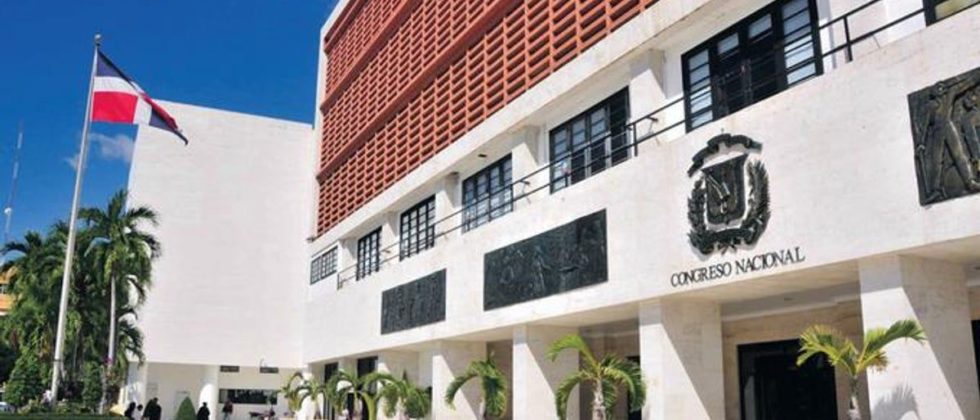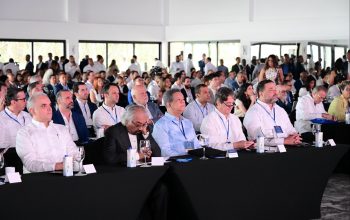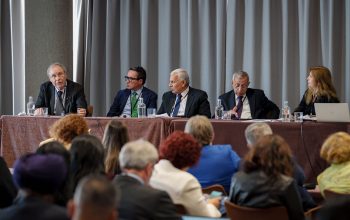news
“The 2010 Constitution: A Comprehensive Reform”, an article by Dr. Leonel Fernández
May 31, 2019
Santo Domingo, D.R. – In the clamor of current political debate, the idea is often slipped in that the constitutional reform of 2010 corresponds in intention or objectives with the others made to our foundational document during the past two decades.
Nothing could be further from the truth. Of the four reforms carried out in our country since the 1990s, only that of 2010 had a truly comprehensive character. The others (1994, 2002, and 2015) involved resolving a crisis or making presidential reelection possible.
For instance, the 1994 reform was conceived as a solution to the post-electoral conflict between the Dominican Revolutionary Party (PRD) and the Social Christian Reform Party (PRSC). It proposed, among other aspects, the reduction of the presidential term to two years; the abolition of consecutive reelection; and the creation of the National Council of the Magistracy for the selection of magistrates within the Judicial Branch.
Nonetheless, with the arrival to power of the PRD for the 2000-2004 term, another reform to our foundational document was undertaken, with the aim of easing reelection by allowing a second consecutive term.
This sparked much controversy in the national political sphere. It produced widespread rejection in public opinion, and an internal schism in the governing party. A crisis of confidence in the party system grew; and in the midst of the economic and social crisis prompted by the bankruptcy of several banks, the hopes of those supporting reelection vanished with the punishing vote expressed at the polls.
With the shipwreck suffered by the governing white party, in 2004 a new government of the Dominican Liberation Party (PLD) returned to power. This government made it a priority to beat the economic crisis inherited from the previous administration and apply policies aimed at recovering the stability and growth of our economy.
Reform process
The unstable situation of the Dominican economy was quickly overcome. Investor confidence was restored, and economic growth returned to annual levels of some 7% of GDP.
With these objectives attained, the PLD government moved to focus, after the renewal of its mandate in 2008, on putting on its agenda the actualization of important institutional reforms, among which stood out, as a fundamental element, a reform on the Constitution of the Republic.
To introduce this reform to our Law of Laws, an unprecedented method—totally unknown in the history of our country—was put into practice. A popular referendum was held that, despite not being contemplated in our legal code, allowed the wide participation of several sectors of national life in the great debate over the content to be incorporated in the new text of the Constitution.
The process of debating the constitutional reform included, among others, the political parties, the press, cultural clubs, churches, universities, professional unions, business sectors, farmers”” organizations, the greens, and the feminist movement.
It was a truly historic and exemplary process. With enormous enthusiasm, the most representative sectors of national life came together to contribute ideas, concepts, values, and principles to the juridical code par excellence that would serve as a compass in consolidating democracy, freedom, social justice, and progress in the Dominican Republic.
Together with this popular referendum, a commission of jurists was created, made up of prominent professionals from the realm of constitutional law. They, in turn, aimed to provide technical-legal background on the various proposals that emerged spontaneously from the feelings, imagination, and creativity of the Dominican people.
Democratic and social rule of law
The Dominican constitutional reform of 2010 was in tune with the set of reforms to founding documents that took place across the Ibero-American world from the time that Spain carried out its own reform in 1978.
The process of transition from authoritarian regimes to elected civil governments that took place in Latin America during the 1980s and 1990s led, during the same period, to 15 countries in the region carrying out proper, comprehensive reforms to their respective constitutions.
It was an exceptional period in the democratic history of Latin America. It aimed to consolidate the democratic and social rule of law in our region. To do that, from an institutional point of view, it carried on through what is now known as the era of Latin American neo-constitutionalism.
The Dominican Republic was in need of a similar comprehensive reform. The Constitution of 1966, which corresponded with the start of the Balaguer era, lasted 28 years. But this constitution lacked a statement of values and principles, suffered from omissions and errors, and was affected by inconsistencies and problems.
The 1994 reform, originating in the post-electoral crisis, did not help overcome these issues. Less still the 2002 reform, which was limited, solely and exclusively, to making possible a presidential reelection project that in the end resoundingly collapsed.
It was, in fact, the comprehensive reform of 2010 that brought the country into line with—and even surpassed, in the view of several international specialists in constitutional law—the modern system of constitutional reform in Latin America.
The constitutional reform of 2010 laid out with clear and unobjectionable criteria the concept of Dominican nationality. It enshrined the principle of democratic and social rule of law as the norm of peaceful and civilized coexistence; and laid out new guarantees for the full exercise of basic rights.
This reform, in addition to consolidating classic rights, incorporated second- and third-generation rights, such as economic and social rights; cultural and sporting rights; and the collective and diffuse rights of environmental and historical/urban patrimonial protection.
Likewise, it allowed for popular legislative initiatives, promoted gender equity, and created the figures of the referendum and the plebiscite, as well as the Judicial Branch Council, the Electoral High Court, the People””s Defender, and the Constitutional Tribunal.
Taken together, both for its procedural character and its substance, the 2010 Constitution, alongside that of 1963, represents the deepest, most participatory, and most democratic of all the constitutions elaborated in the Dominican Republic since its founding in 1844.
There are those who, from the outset, wished to trivialize or reduce it to the relative aspect of the presidential terms. With this, it was attempted put this reform on par with those of 2002 and 2015, which confined themselves, plainly and simply, to making incumbent presidential reelection possible.
But that is not the case for the 2010 reform. This went further. As it has been possible to observe, the 2010 reform had a vision of the future in birthing a genuine code for consolidation of democracy, justice, and the guarantees of citizen rights in our country. In short, a Constitution to go down in history.






